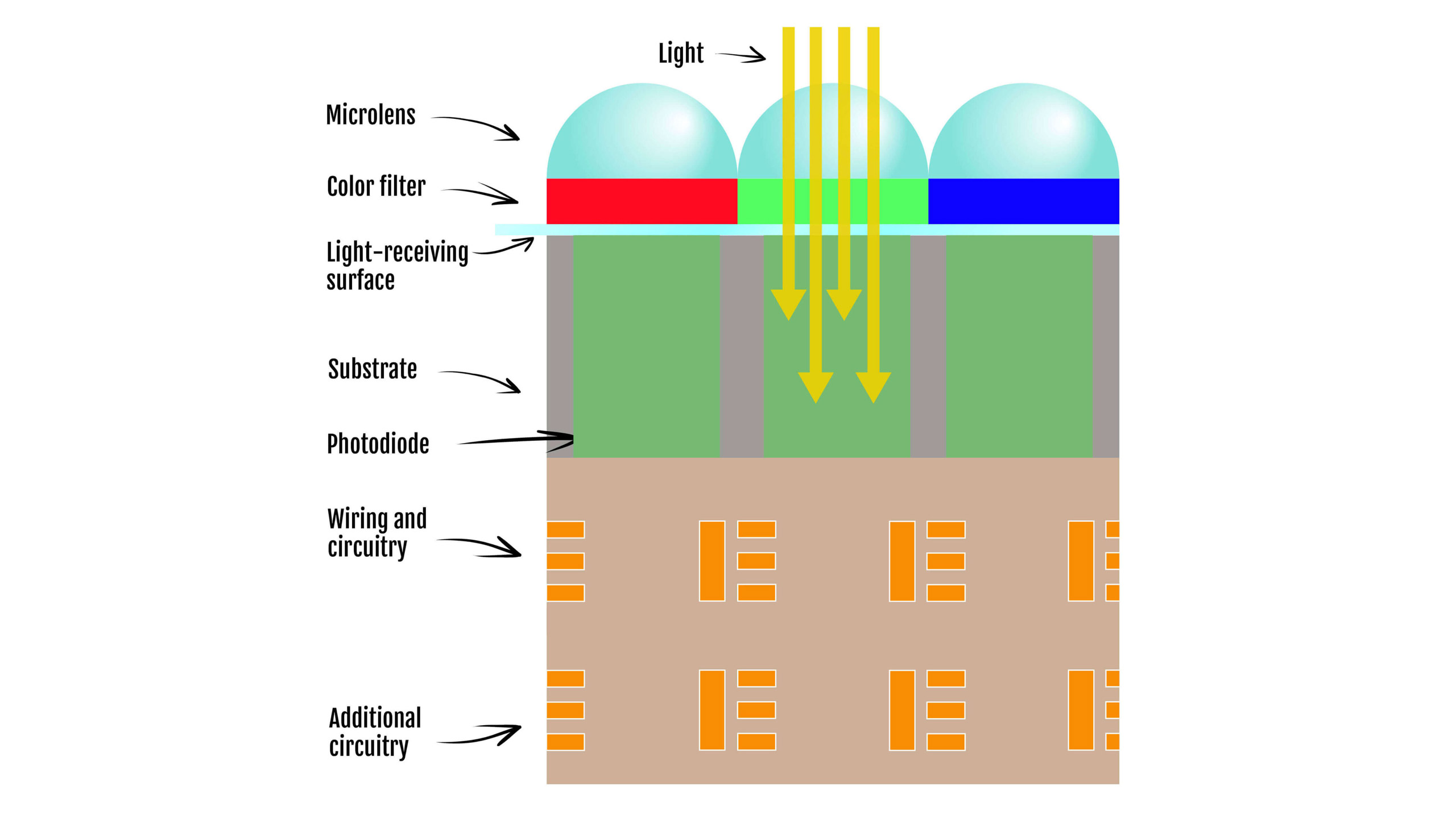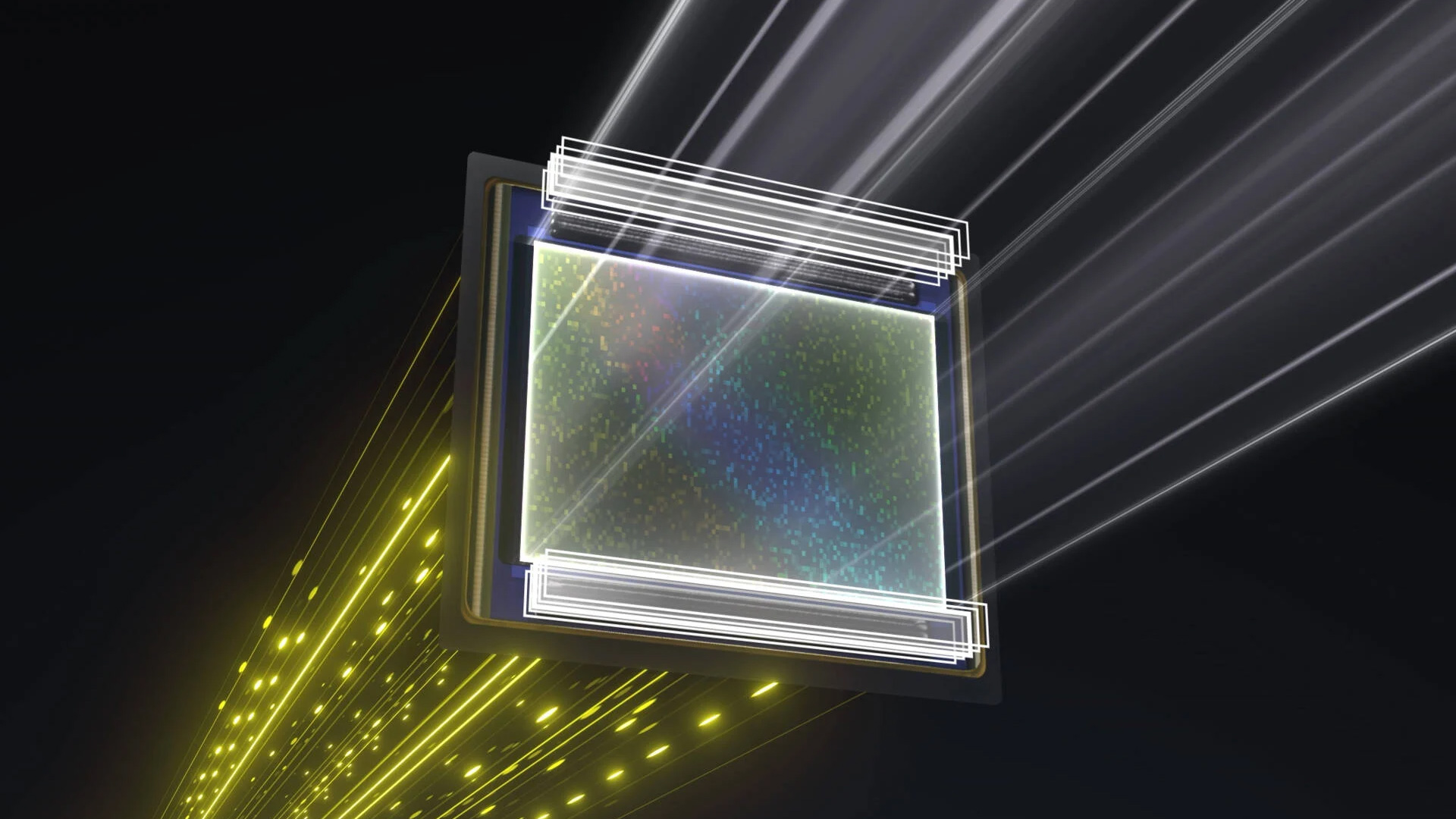More and more cameras have it, so what is a stacked sensor and is it something you really need?

Stacked sensors are like an evolution of back-illuminated sensors with an extra layer of circuitry designed for higher speeds processing.(Image credit: Canon)
Image sensor design has come a long way in just a few years. Some improvements have been slow, quiet and evolutionary. Others have brought a clear step forward in sensor performance. The latest innovation is ‘stacked sensors’, which have brought a big increase in continuous shooting and video performance. So what is a stacked sensor and how does it work?
Let’s start briefly withBSI, or back-side illuminated sensors. In the old days, all the associated circuitry for sensors ran in and around the light-sensitive photosites that actually captured the light values.
Then designers figured out that if you turned the sensor around, so that the circuitry was on the back instead of the front, you could make the photosites bigger and effectively use up the whole surface area of the sensor with no gaps in-between. BSI sensors typically offer better sensitivity, better dynamic range and lower noise as a result.
But where BSI sensors brought improvements in image quality, stacked sensors are designed to offer improvements in speed – specifically the ‘readout speed’ – since this is one of the bottlenecks for camera performance.
>>>NB-CP2LH Battery for Canon CP710 CP730 CP760 CP780 CP790 CP800

Stacked sensors are like an evolution of back-side illuminated sensors with an extra layer of circuitry designed for higher-speed processing(Image credit: Fujifilm)
A sensor with a slow readout produces more rolling shutter, or ‘Jello effects’ in video, or ‘shutter distortion’ when photographing fast subject movement with today’s high-speed electronic shutters. A faster readout speed can also help with continuous shooting speeds and autofocus performance.
Some of thebest cameras for professionalsand many of thebest cameras for sports photographyuse stacked sensors to achieve high-speed burst rates.
With conventional sensors, the electronic signals from the photosites have to travel to circuitry arranged around the outside of the sensor for processing. It doesn’t sound much of a distance, but it slows things down.
With a stacked sensor, all this circuitry is moved to the back of the sensor itself, shortening the distance for the signals to travel and speeding up the readout and processing speed.
>>>NB-5H Battery for Canon Powershot A5 Zoom/A50/S10/S20
Do you need a stacked sensor?

Just when you thought everything was clear, theNikon Z6 IIIarrived with a ‘partially’ stacked sensor…(Image credit: Nikon)
Stacked sensors excel for high-speed continuous shooting, autofocus tracking performance and blackout-free viewfinders in burst mode, and for dynamic video capture with fast camera movements and rapidly moving subjects.
That’s why many cameras designed for this kind of work now have stacked sensors. That’s not to say that older cameras without them couldn’t handle these subjects, but stacked sensors tend to handle them better.
But it does depend on the kind of photography and videography you do. If you don’t shoot a lot of sports and wildlife, and tend to take single shots rather than bursts, then a stacked sensor won’t deliver any obvious benefits.
Similarly, if your video work is based around tripods and sets and choreographed action rather than fast run-and-gun style filming, then you probably won’t see much benefit here either.
The fact is that while a stacked sensor is a strong selling point, it does substantially impact the cost of a camera – and may not yield any significant benefits for the kind of shooting you do. Right now, a stacked sensor is not so much a ‘must have’ as a ‘might want’.